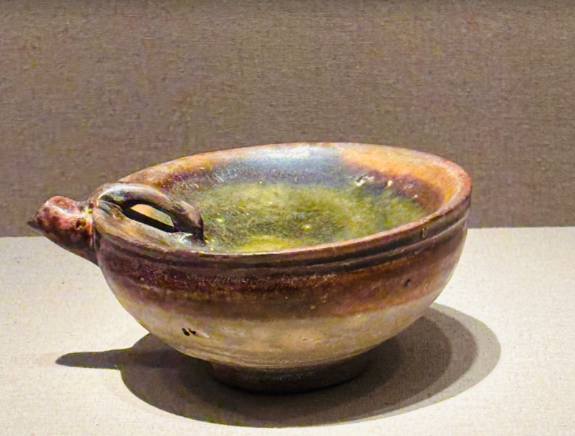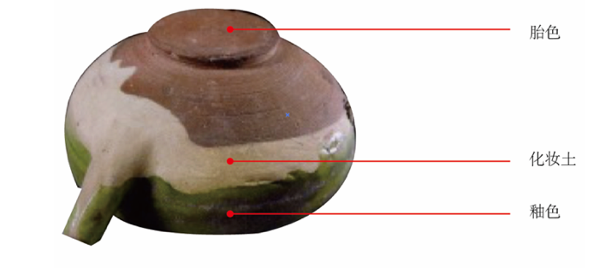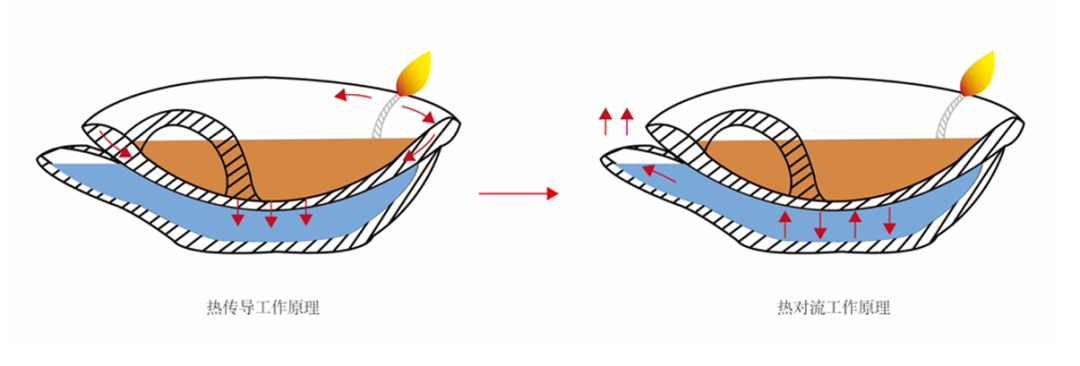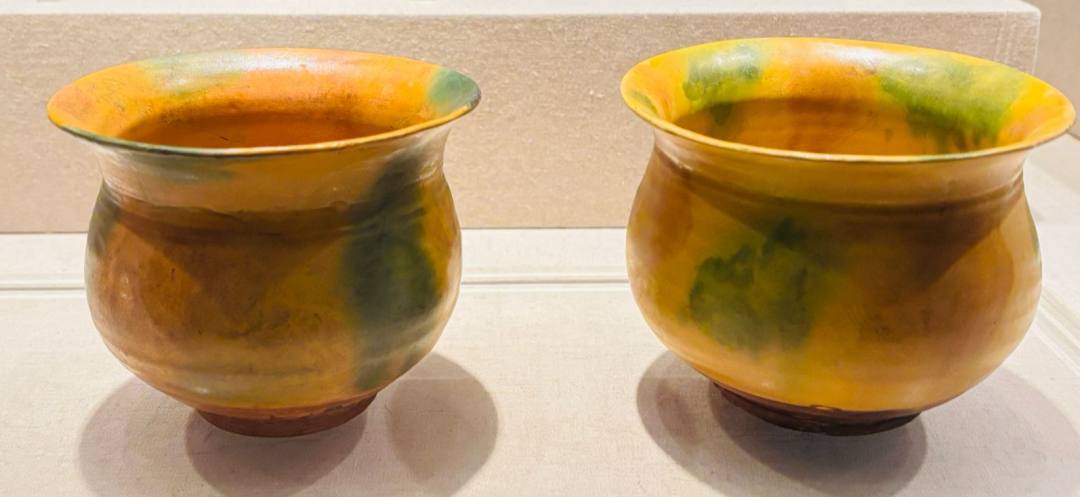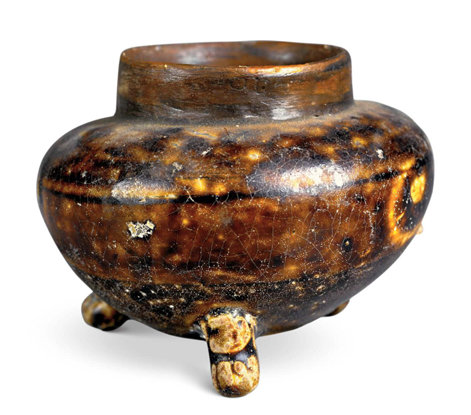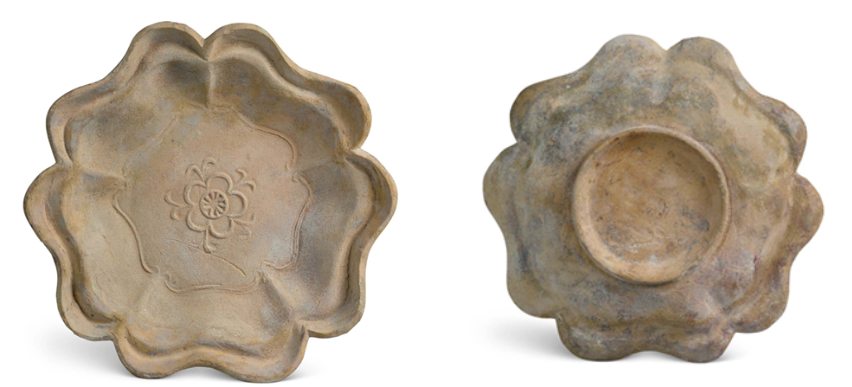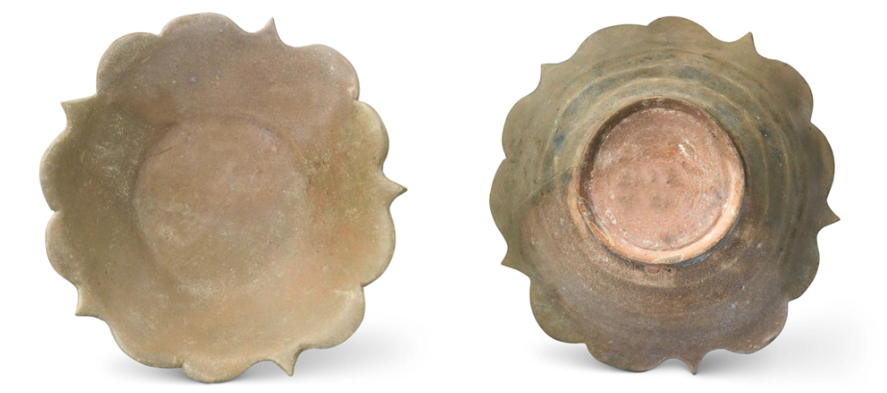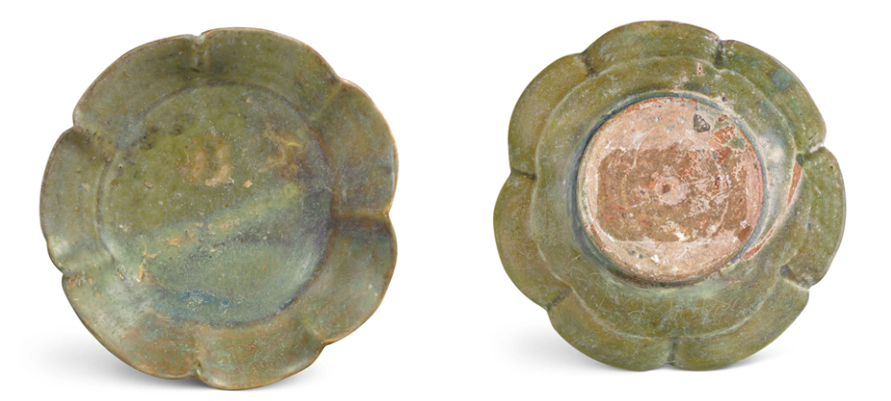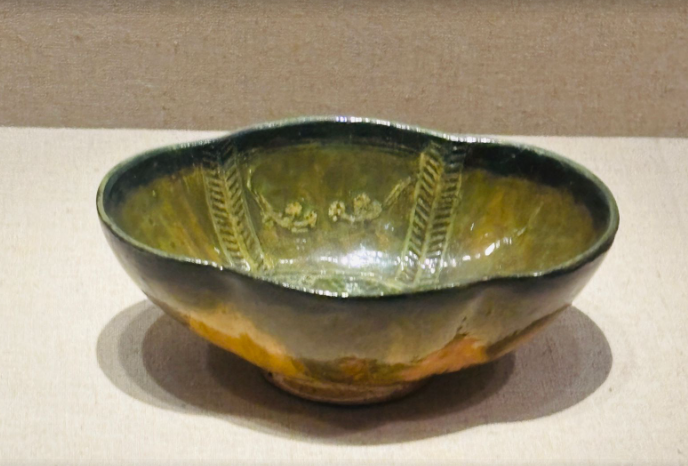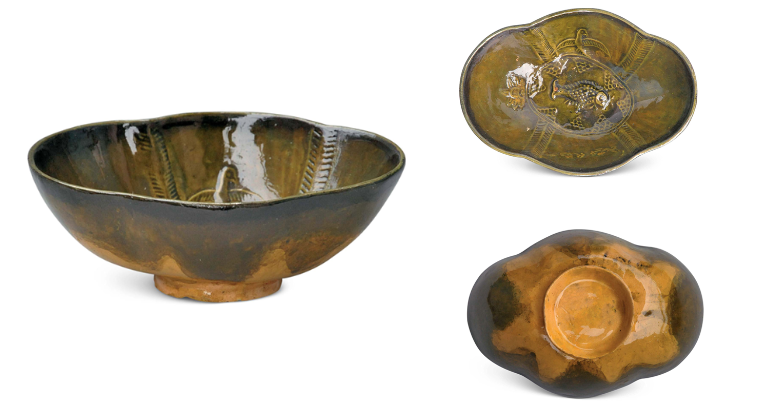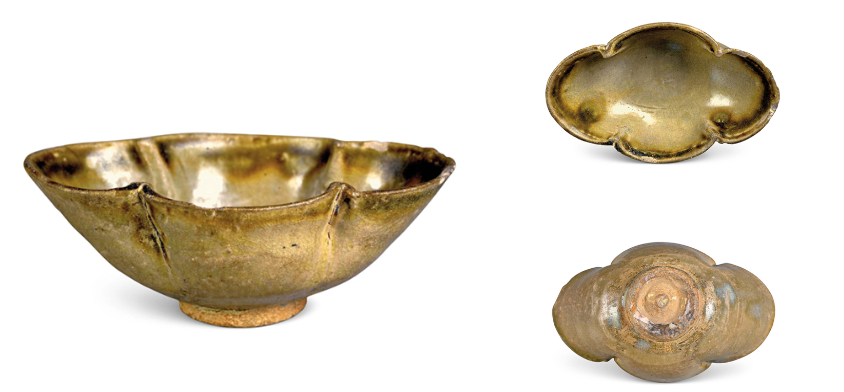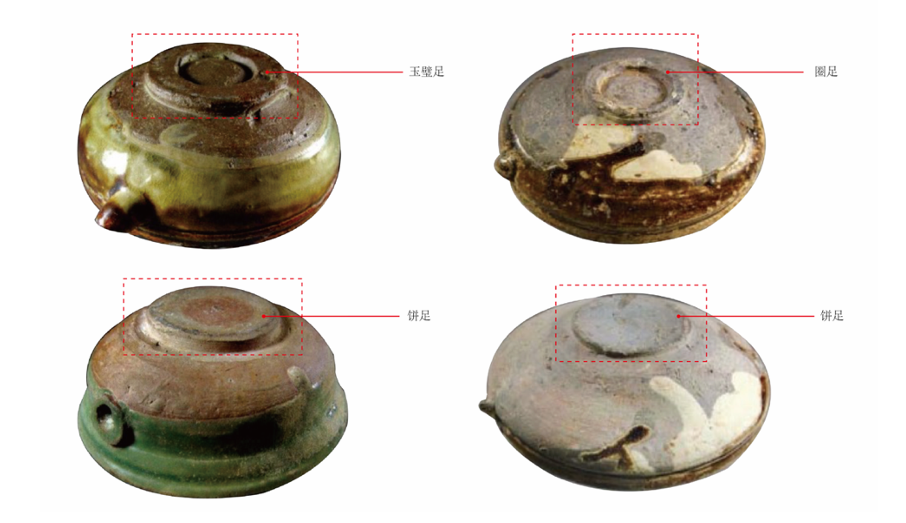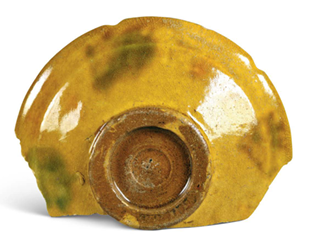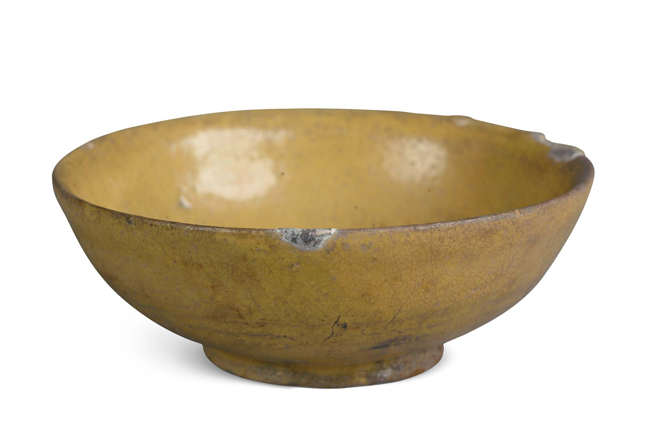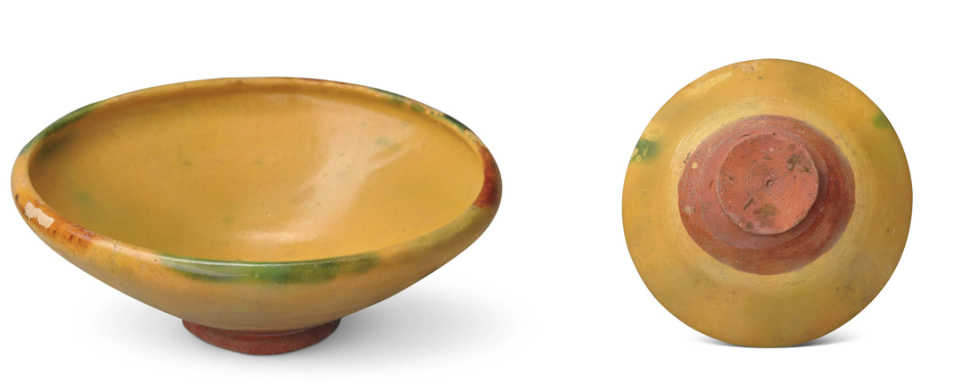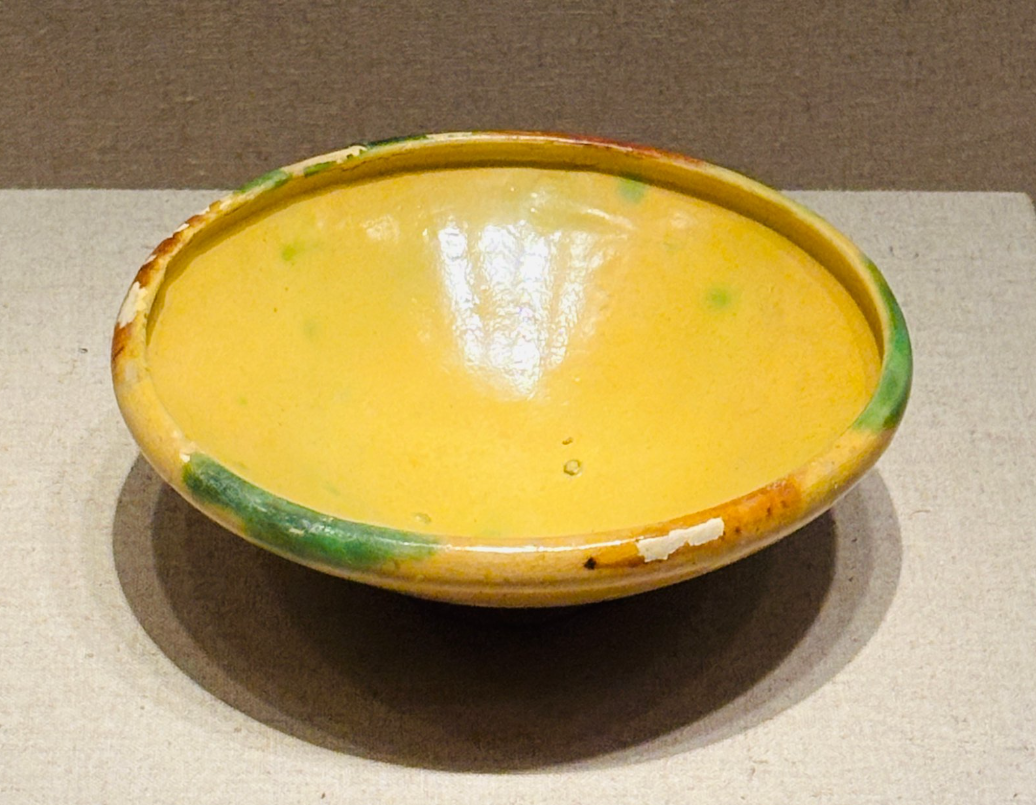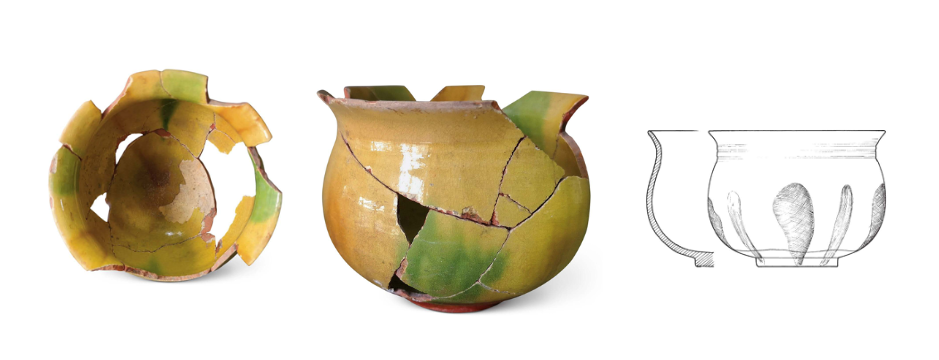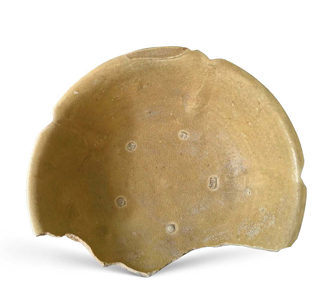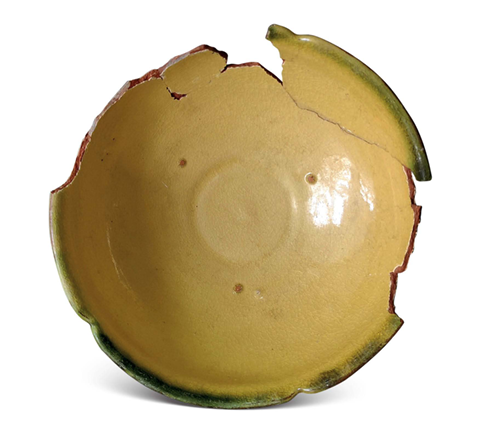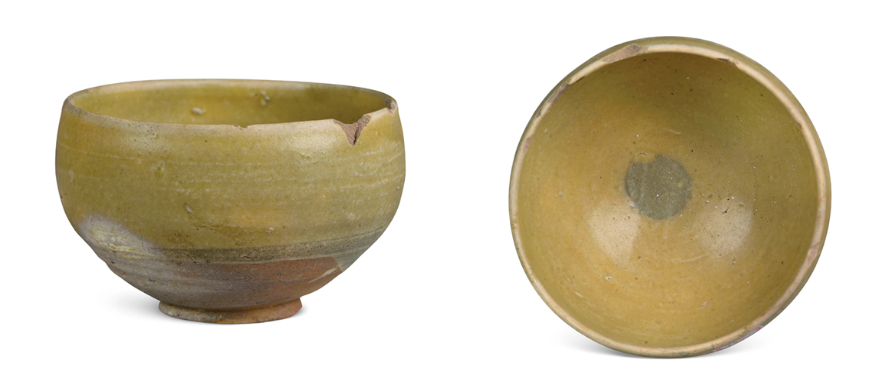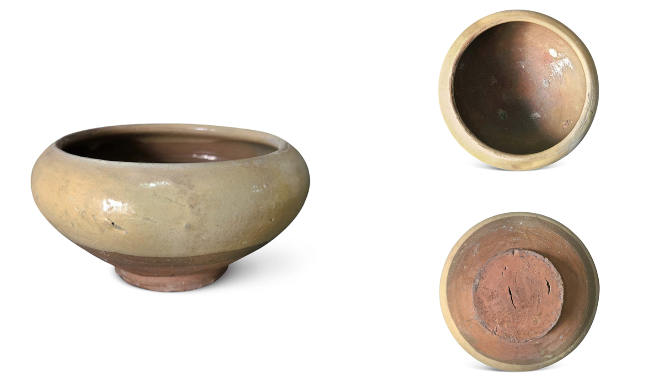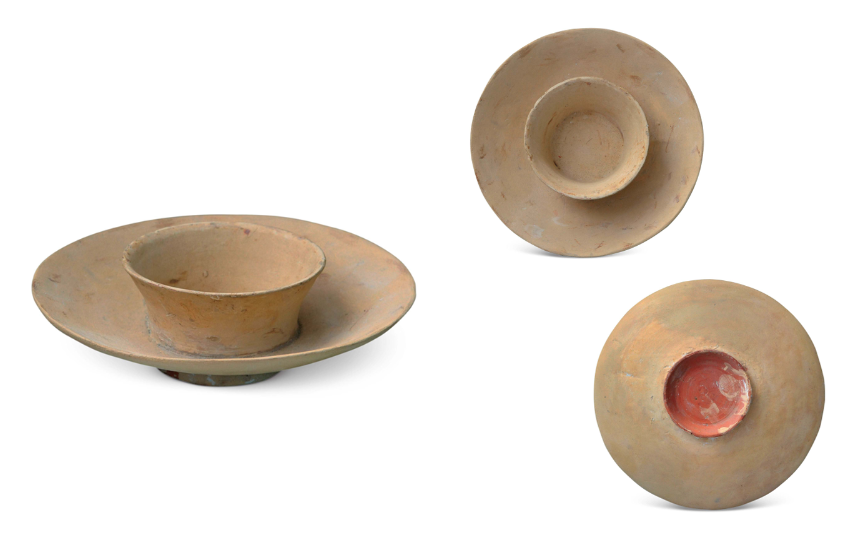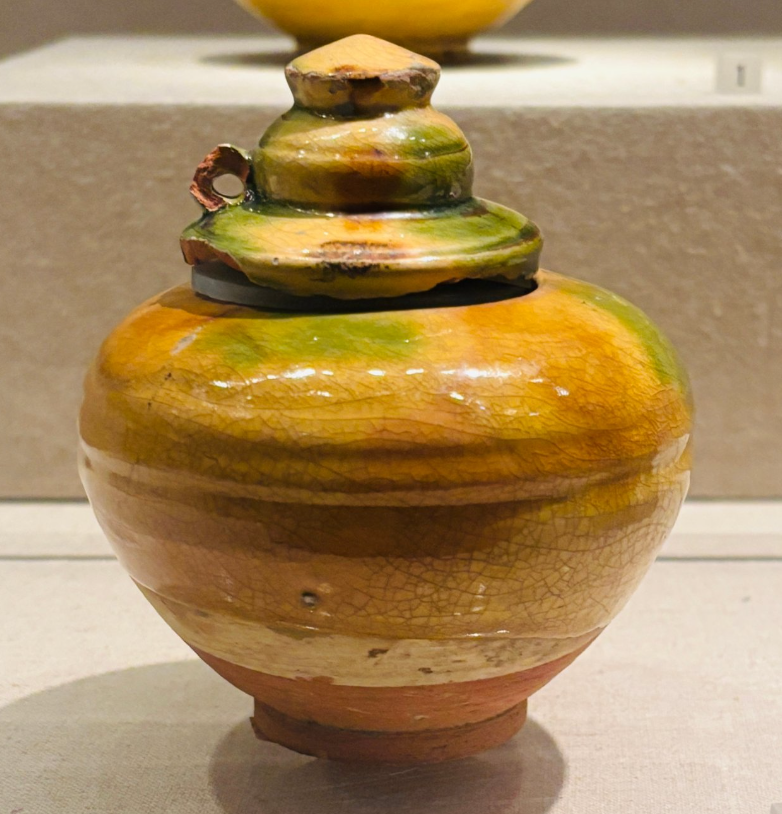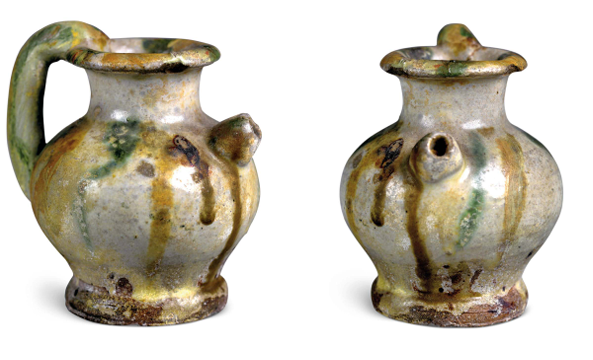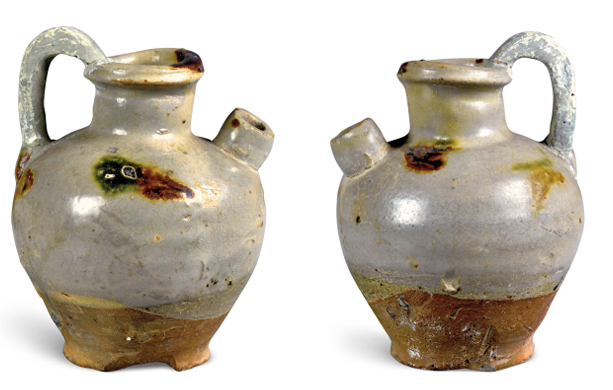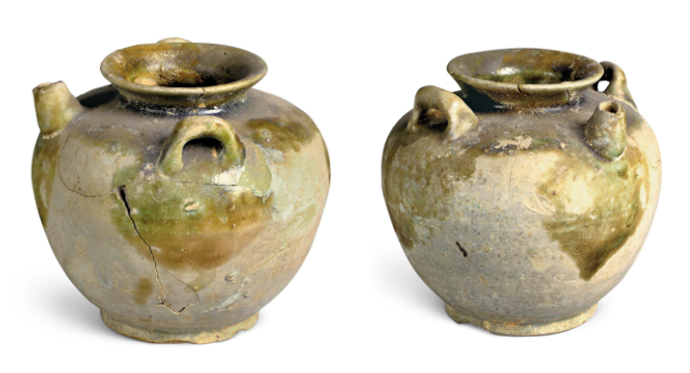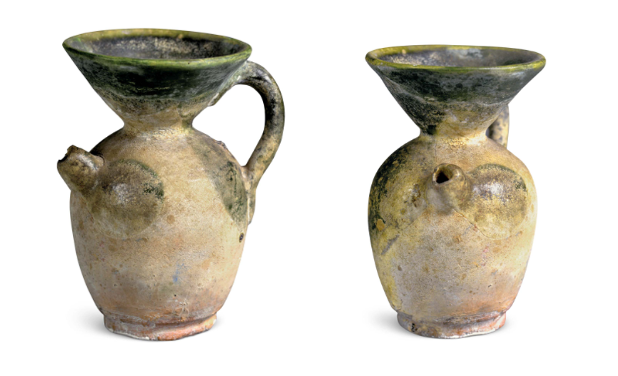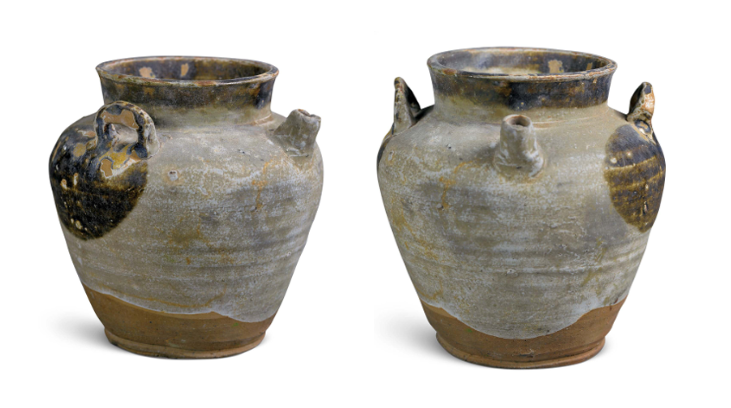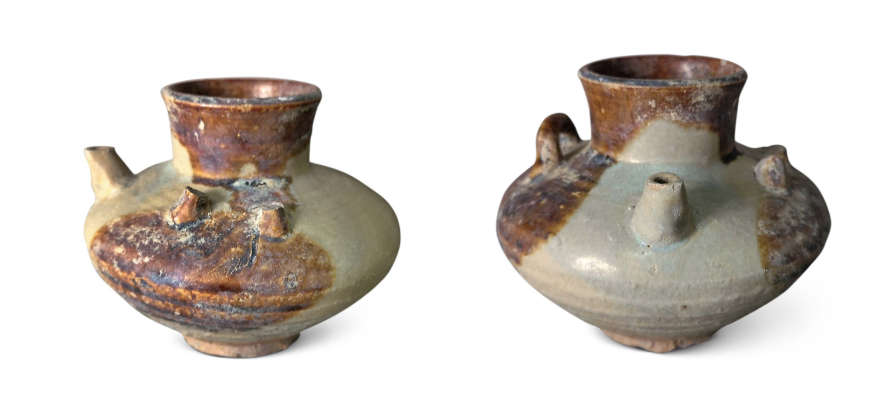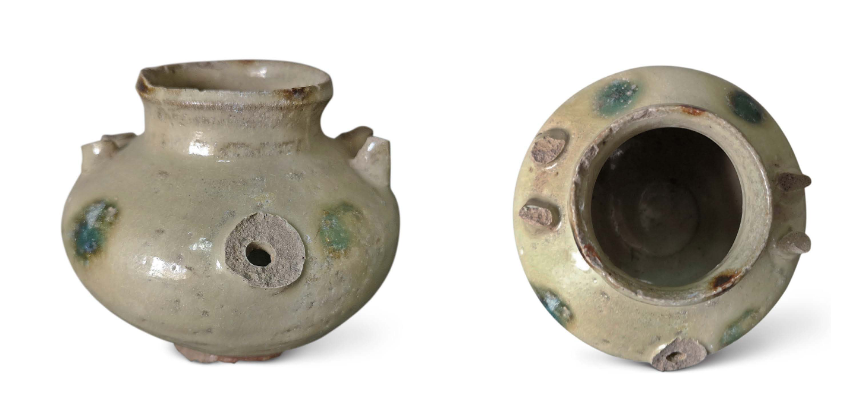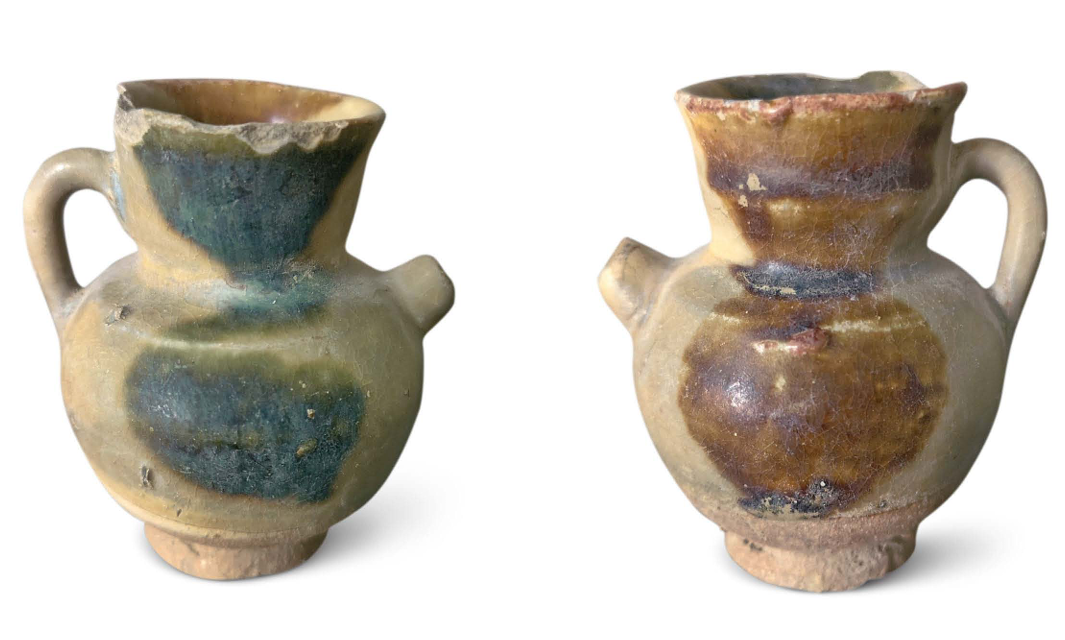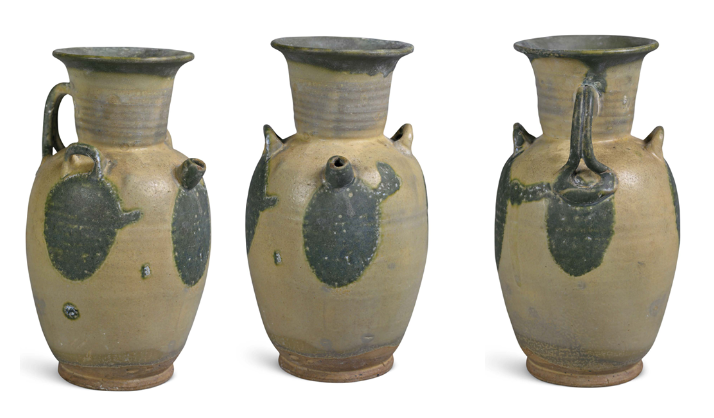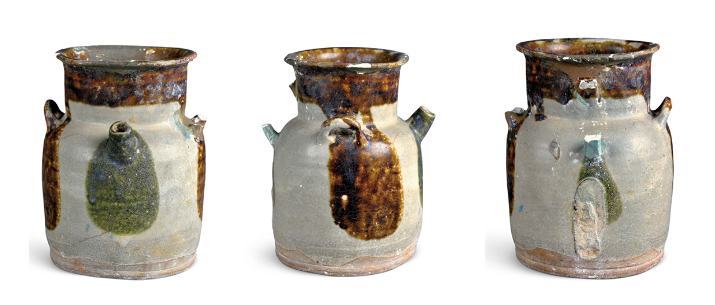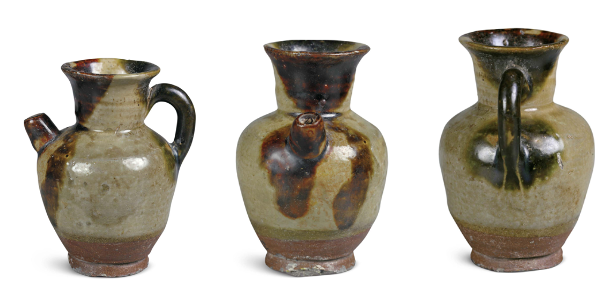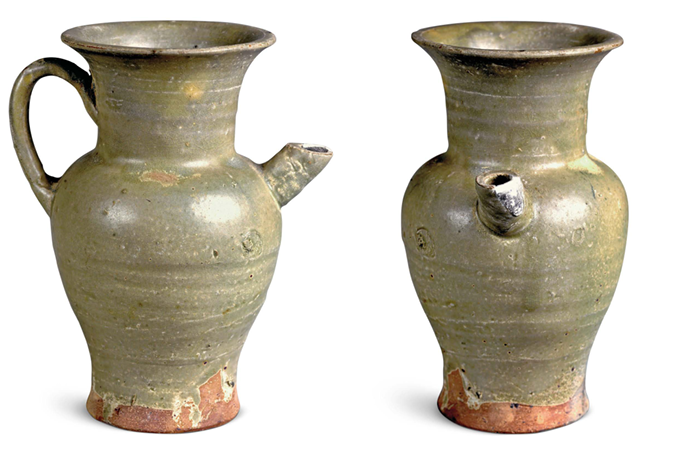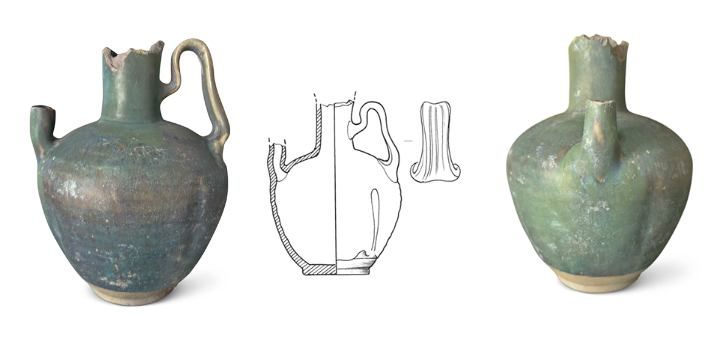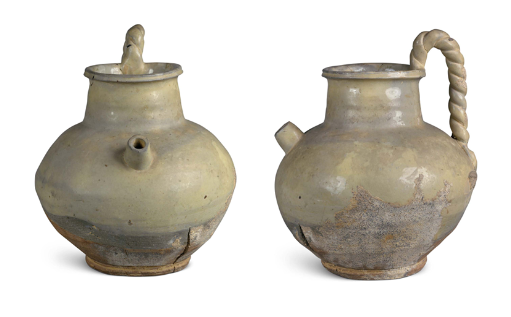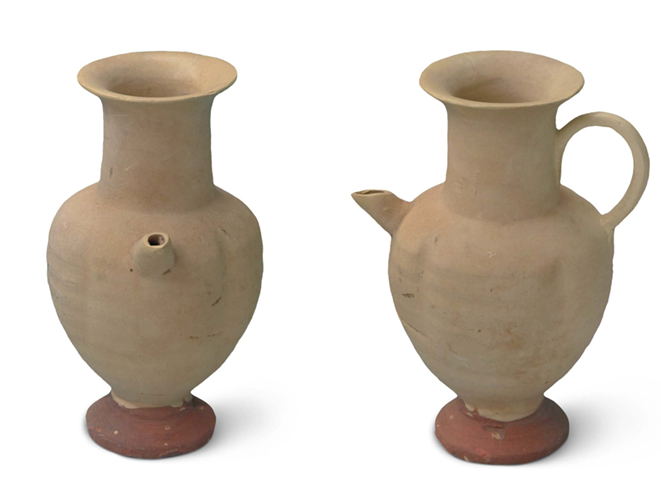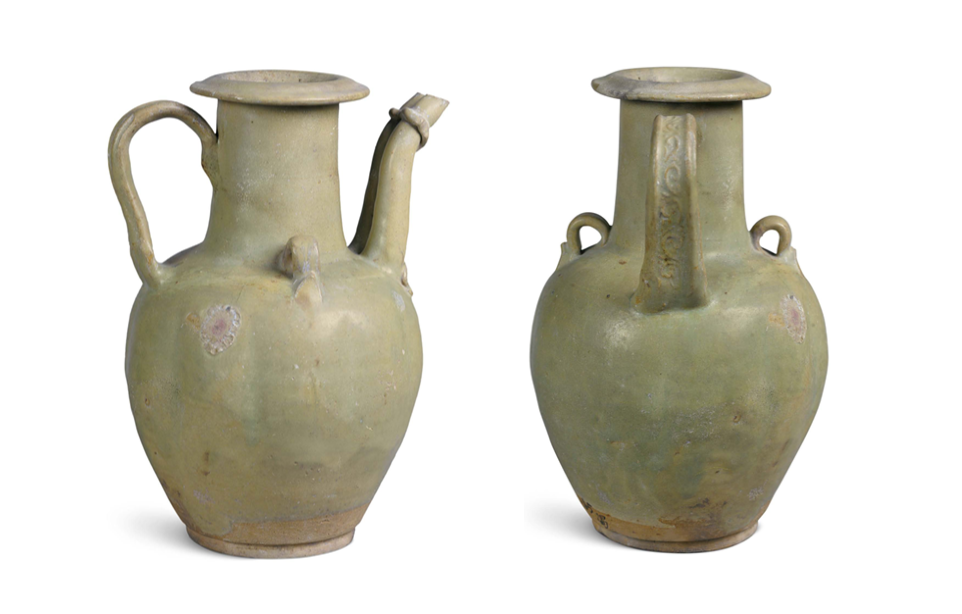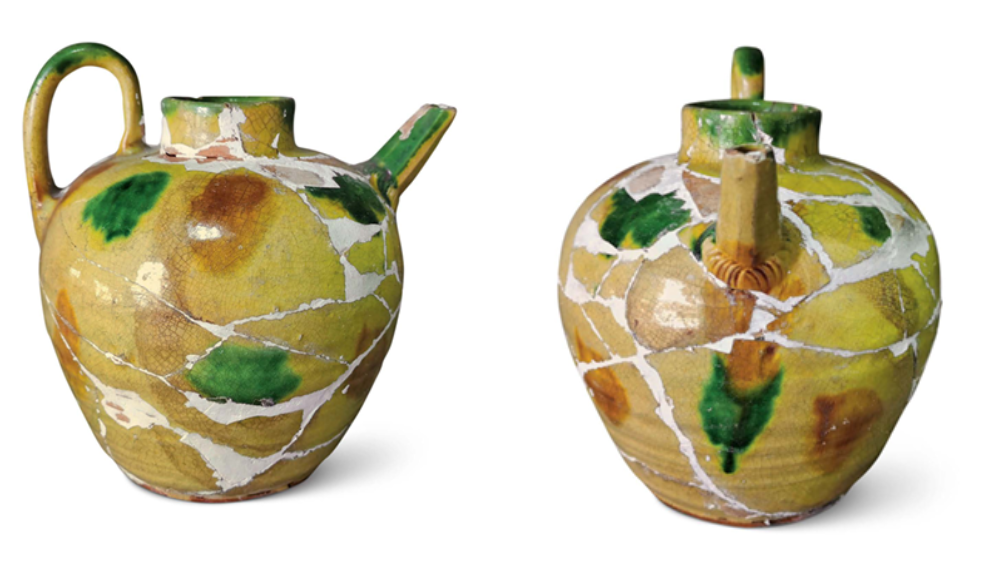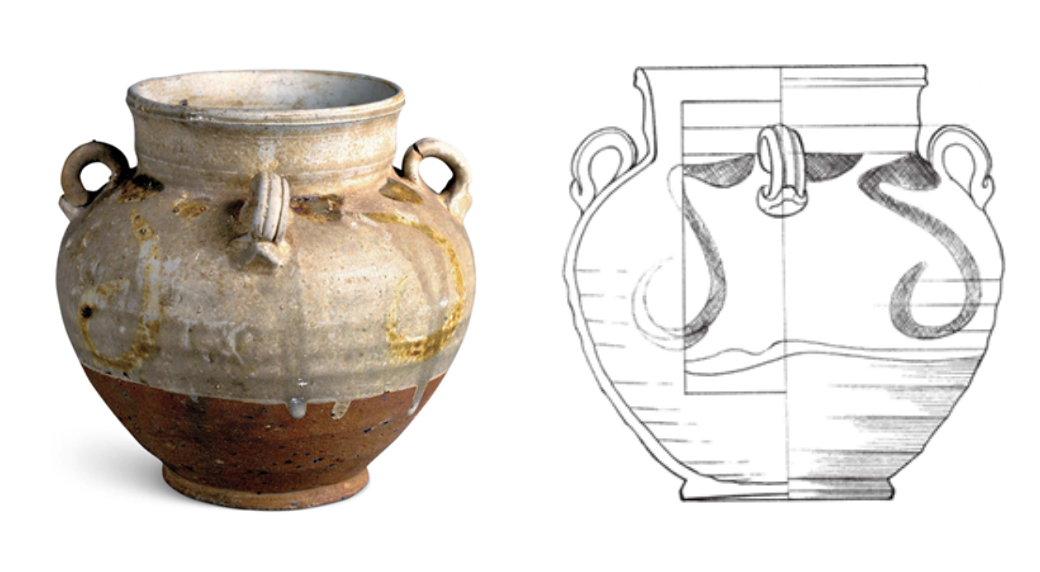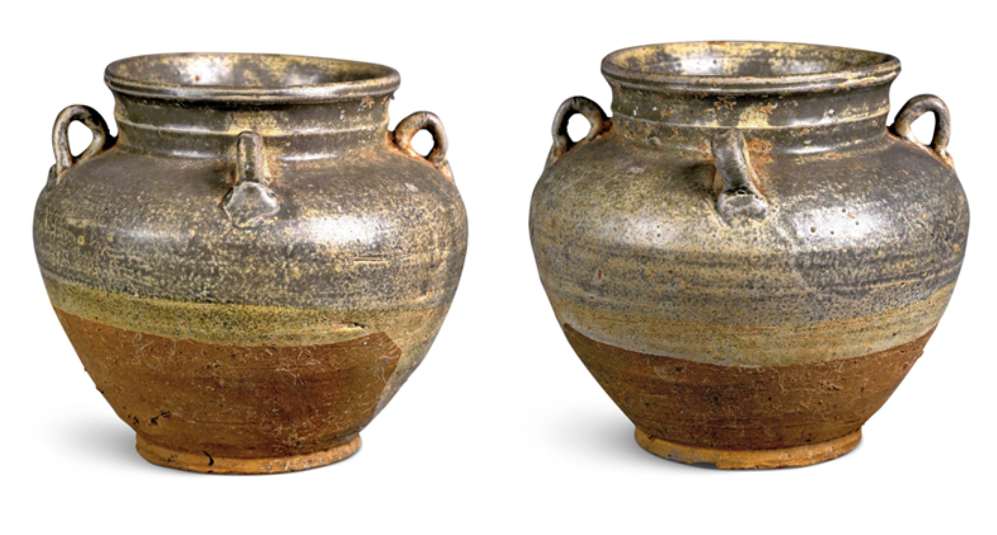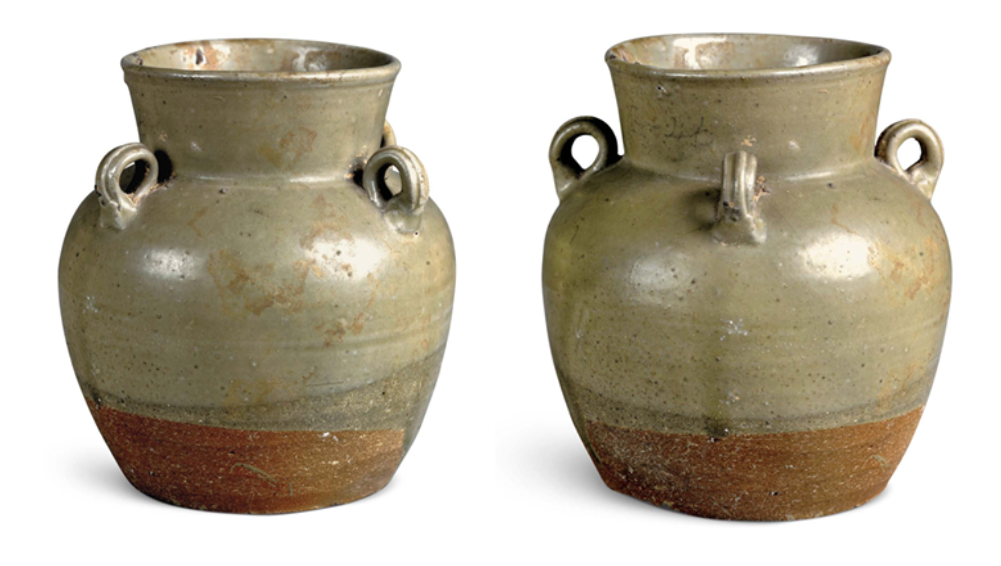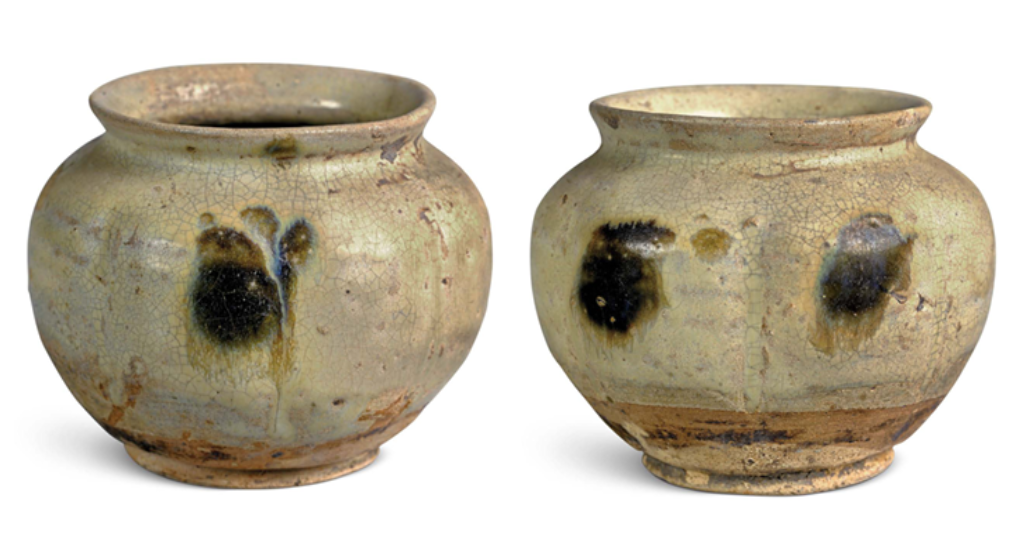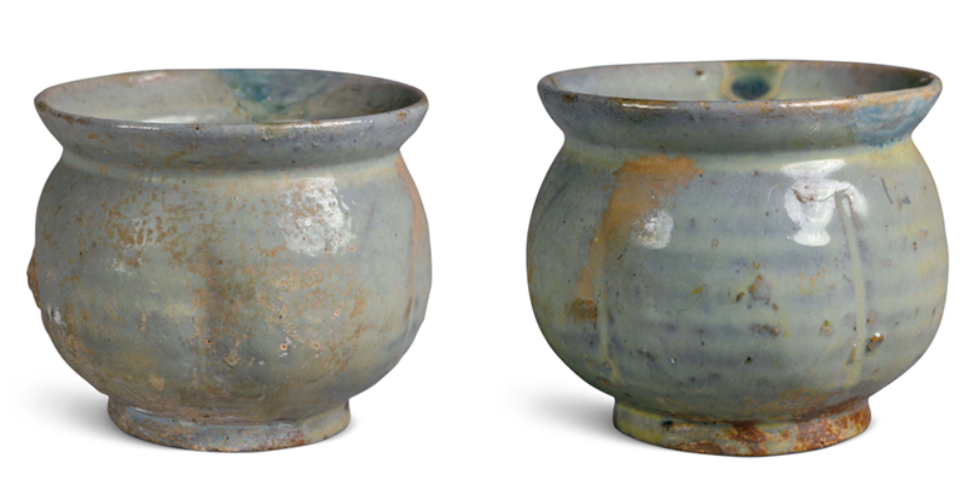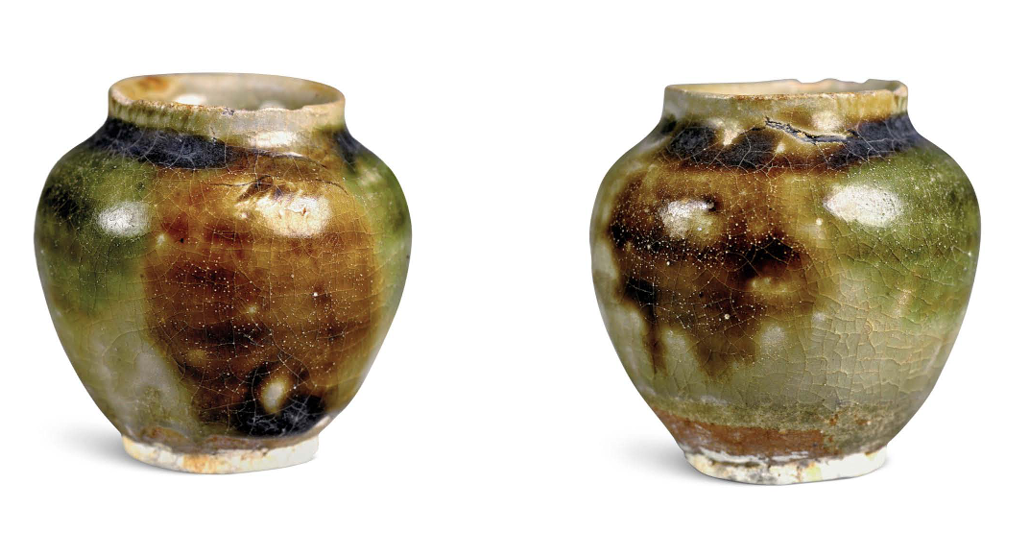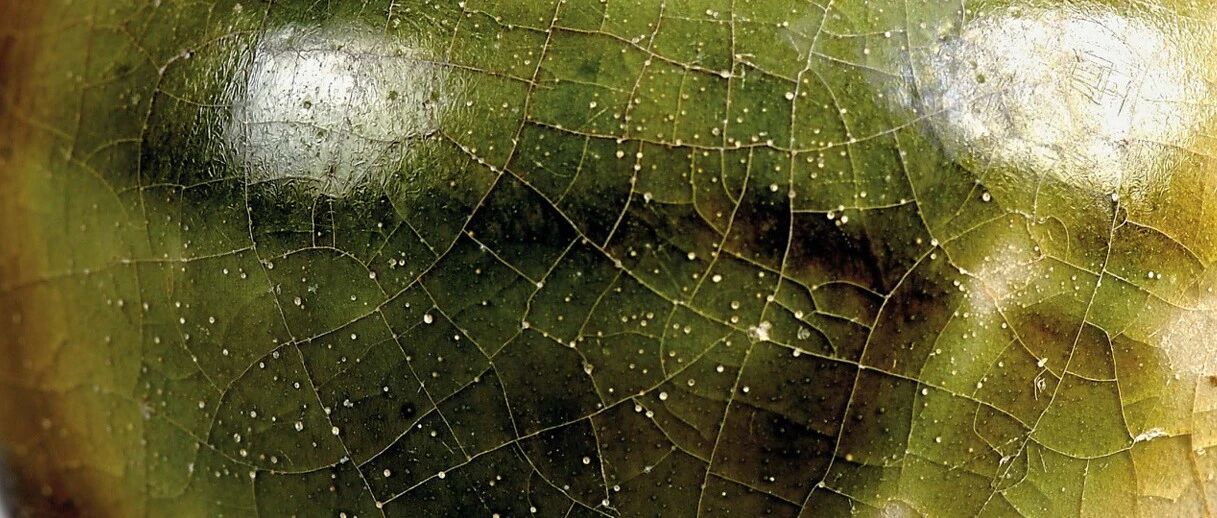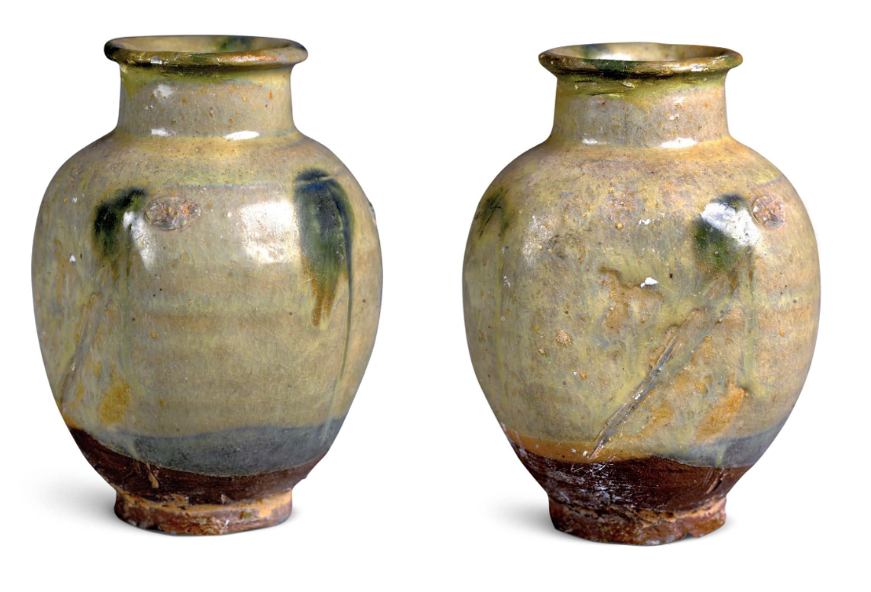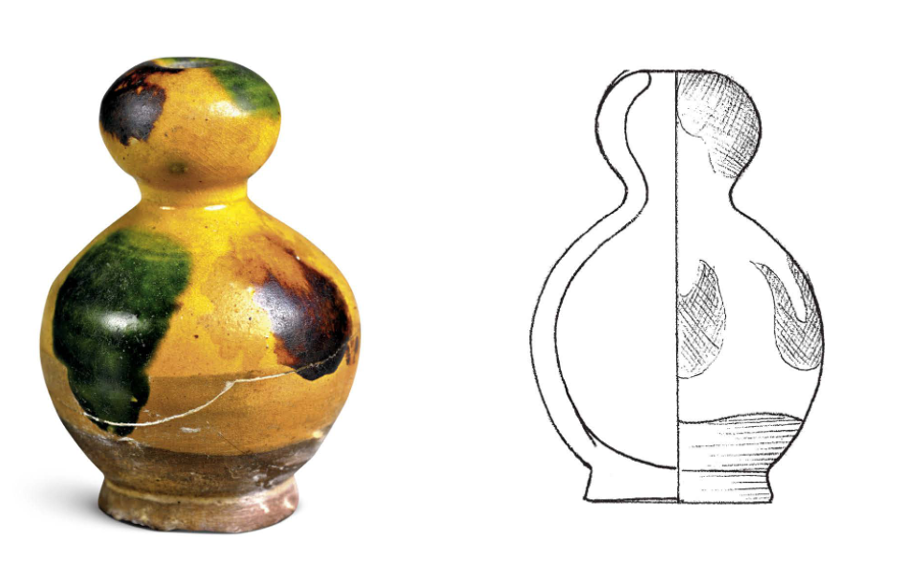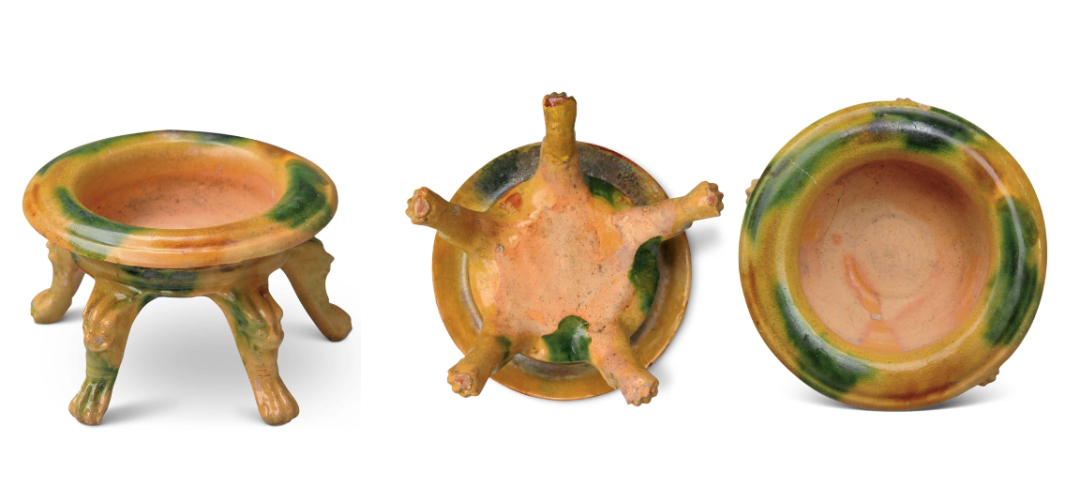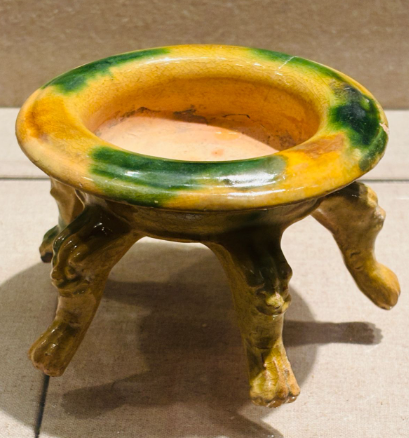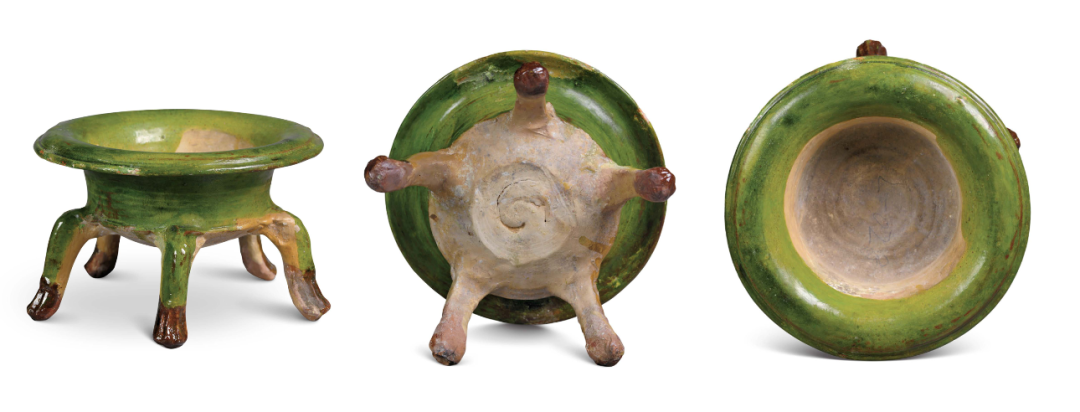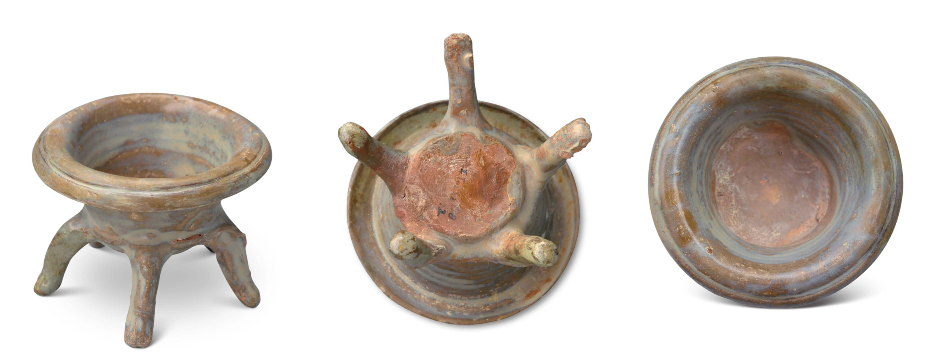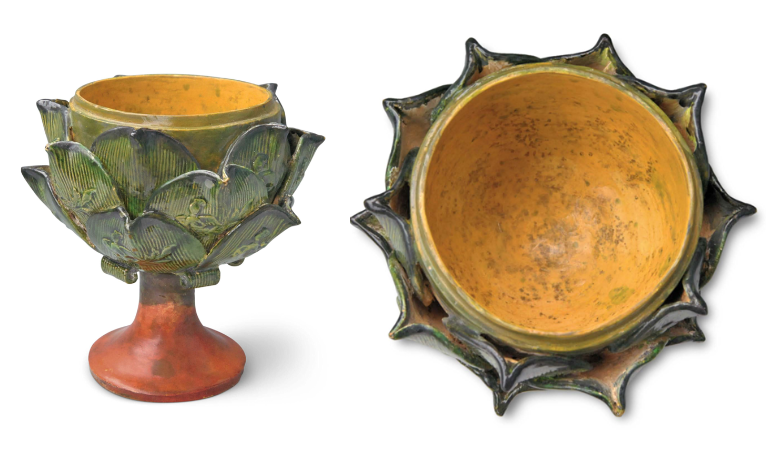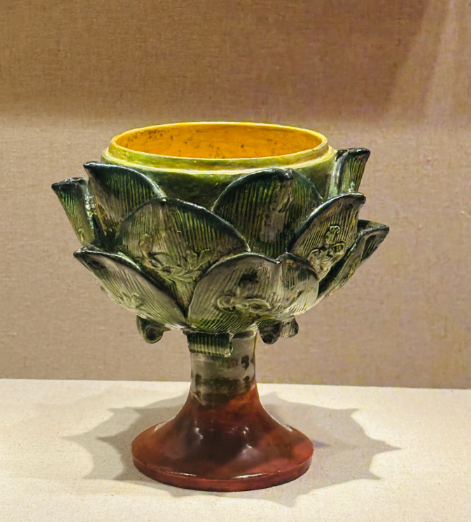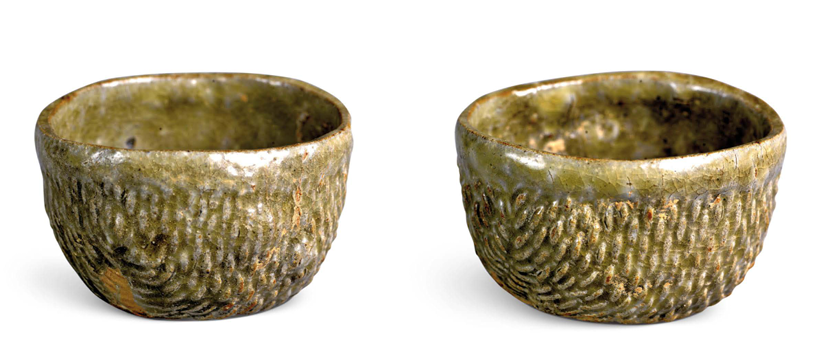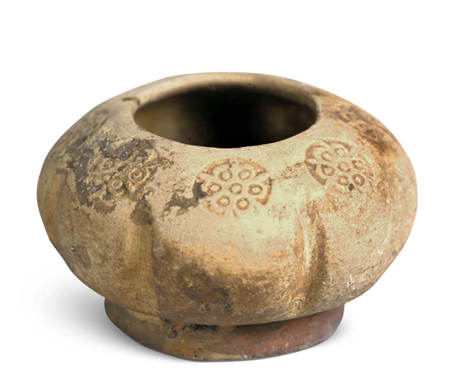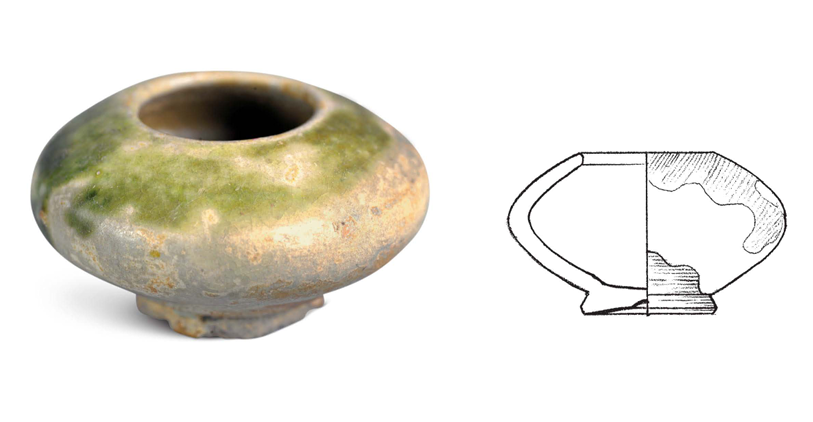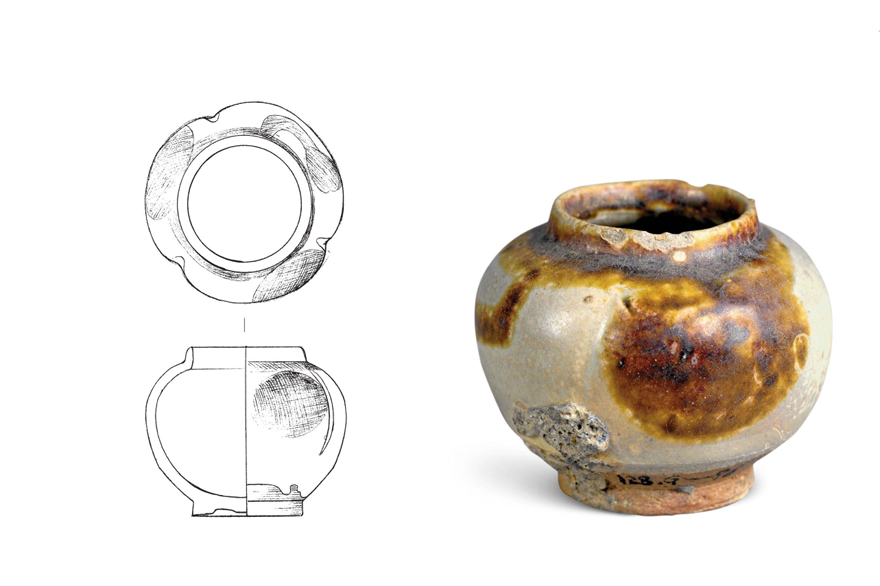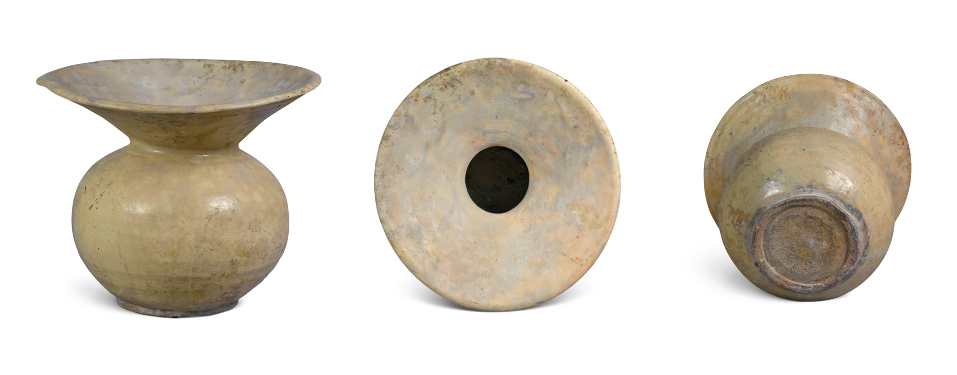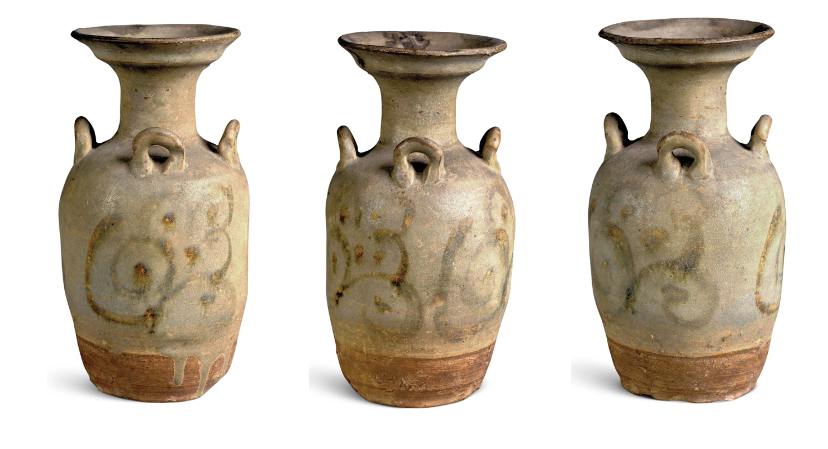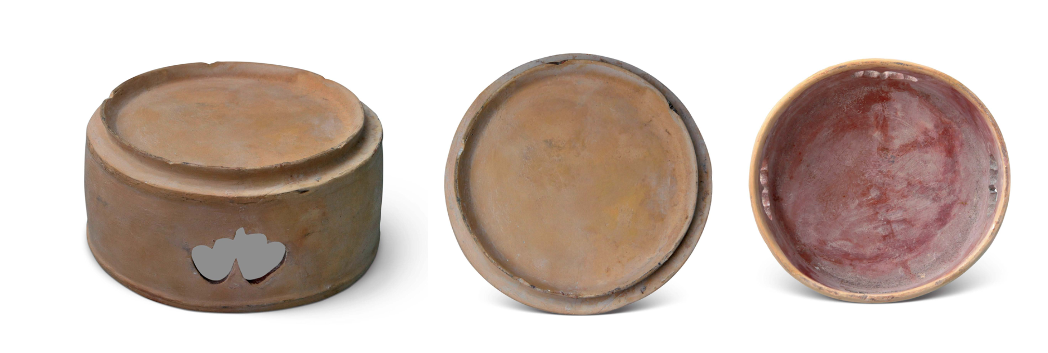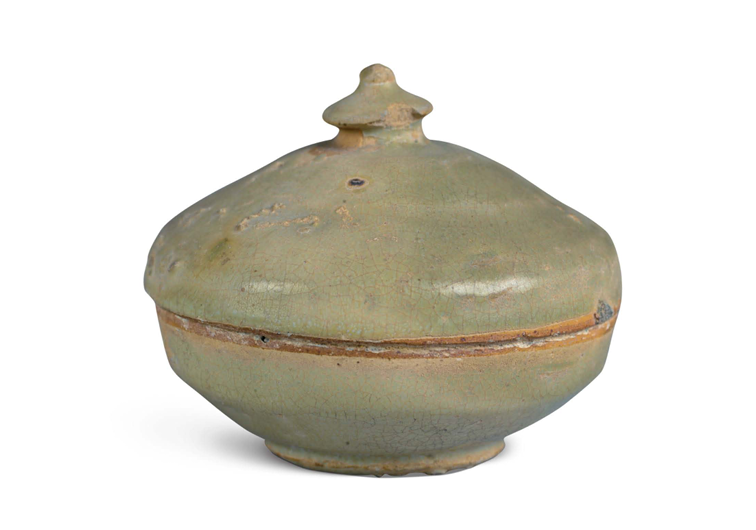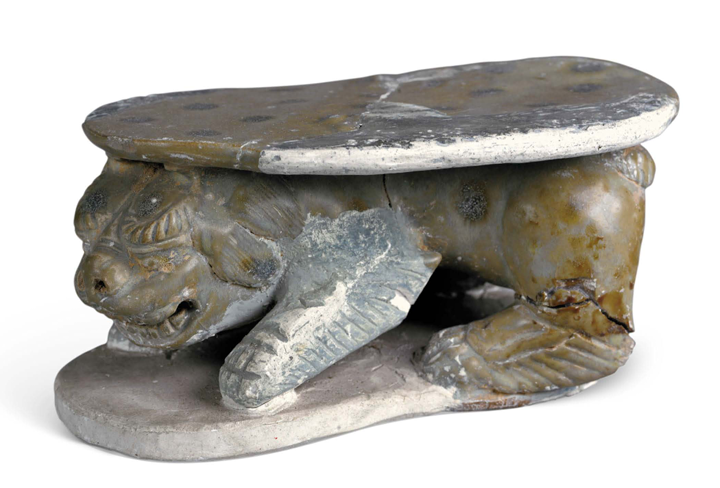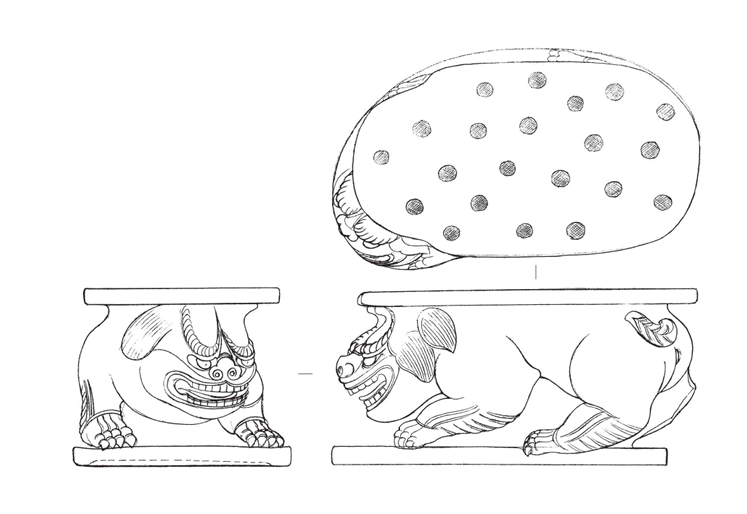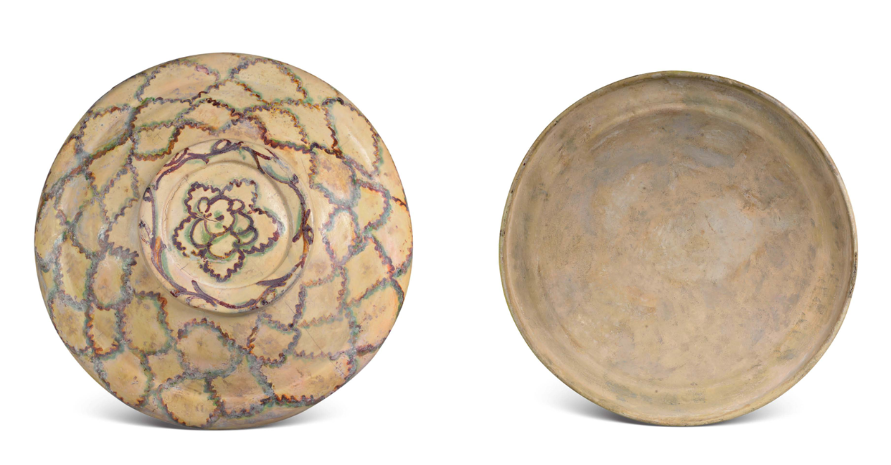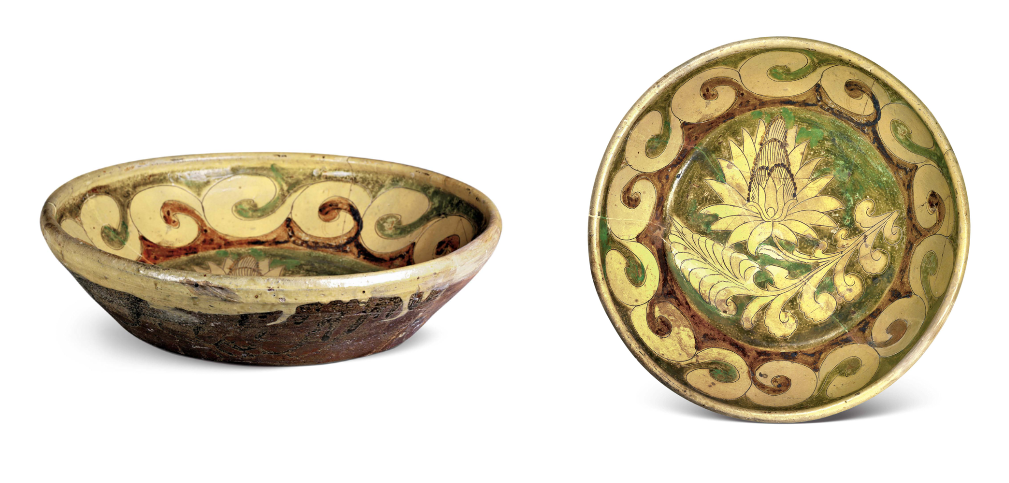Qiong Kiln, the birthplace of Chinese colored porcelain (II)
2025-09-15
Late Tang Dynasty to the Five Dynasties period
From the late Tang Dynasty to the Five Dynasties period, daily utensils reached unprecedented diversity, encompassing bowls, plates, handle cups, long cups, tea bowls, tea bowl saucers, bowls, lamp dishes, oil-saving lamps, water pots, boxes, spouted jars, flat-rimmed jars, pots, grinding tools, lids, and more than ten other categories. Display and toy ceramics proliferated, with flower vases, various incense burners, figurines, and nested boxes appearing in abundance. Notably, the famous oil-saving lamps from Qiong Kiln also emerged during this period.
邛窑省油灯釉色分析图
The secret to Qiongyao oil-saving lamps' efficiency lies in maintaining a low temperature in the lamp bowl, using physical cooling to suppress unnecessary oil evaporation. Heat conduction and water evaporation are the primary factors affecting the temperature of the lamp bowl in Qiongyao oil-saving lamps. Modern experiments show that under identical oil quantities and usage durations, Qiongyao oil-saving lamps achieve average fuel savings of 8%–20%, with some conditions exceeding 22%.
During this period, the glaze colors of Qiong kiln wares expanded beyond celadon and brown glazes to include sky blue, moon white, blue-green, and green opalescent glazes, along with low-temperature yellow and green “Qiong Sancai.” Celadon glaze remained the most prevalent, followed by low-temperature glazes.
口径 4.7、底径3.1、最大腹径 8.2、高 6.6 厘米
The forms are well-proportioned, with bowls and plates often featuring sunflower or rhombus-shaped rims, sloping straight or angled sides; disc-shaped bases predominate, while disc-shaped and bell-shaped bases begin to appear. Pitchers and jars frequently exhibit gourd-shaped ribs, while incense burners have angled rims and hoof-shaped bases imprinted with animal heads. The clay bodies tend toward thinness, with a predominantly beige slip coating; low-fired glazed wares often exhibit “glaze wrapping the foot.” Celadon ware exhibits tight bonding between body and glaze, with a highly vitreous surface. Low-temperature glazes, due to secondary firing, frequently show glaze flaking.
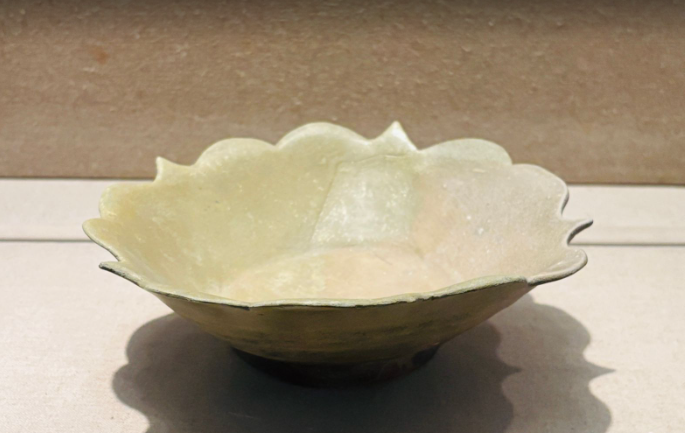 In decoration, blue and opalescent glazes still predominantly feature speckled and clustered colors, with box lids mold-printed with dragons and celestial beings. Low-temperature glazes mold-print lotus flowers, fish, birds, and beast faces, while yellow glazes increasingly incorporate brown-green banded patterns, strongly emulating the style of gold and silverware.
In decoration, blue and opalescent glazes still predominantly feature speckled and clustered colors, with box lids mold-printed with dragons and celestial beings. Low-temperature glazes mold-print lotus flowers, fish, birds, and beast faces, while yellow glazes increasingly incorporate brown-green banded patterns, strongly emulating the style of gold and silverware.
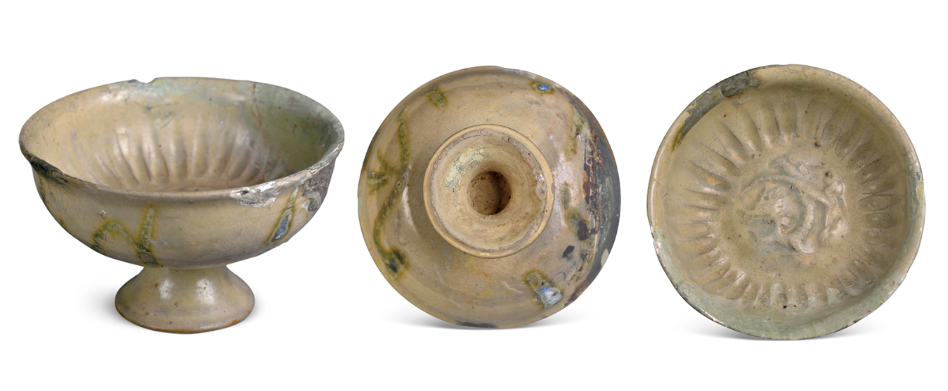
In the firing process, straight-sided cylindrical kiln shelves appeared for the first time. Green-glazed bowls and plates were fired upside down, with four to five pieces per shelf. Stoves and small cups were stacked on top. The practice of stacking pieces for open-flame firing continued, though kiln supports and pillars became shorter, and kiln cakes were no longer used. Low-temperature glazed wares employed three-pronged kiln supports, while fully glazed bases retained “sesame-seed-like” glaze marks from the kiln supports.
口径3.7、最大腹径 9.8、底径 4.6、高9.8 厘米
口径10.1、腹径 15.0、足径8.9、高15.6 厘米
口径 5.2、腹径 10.7、足径4.6、高88厘米
口径3.3、腹径 4.9、足径2.6、高6.3厘米
口径9.3、腹径12.2、足径7.8、高 22.1 厘米
口径 4.4、腹径 6.6、底径 4.0、高9.6 厘米
口径8.1、腹径9.0、足径6.1、高15.2厘米
口径 9、最大腹径18.1、足径9.2、高 21.5厘米
口径10.2、最大腹径17.1、足径 9.8、高 27.3 厘米
口径4.1、最大腹径11.3、足径7.8、高 13.9 厘米
口径10.2、腹径7.5、足径8.0、高13.8 厘米
口径8.8、最大腹径12.8、底径 9.0、高 14厘米
口径 3.7、腹径 8.3、足径 4、高14.7厘米
口径 3.0、腹径 5.4、足径 2.6、高3.2厘米
口径 2.4、腹径 5.0、足径2.3、高2.9厘米
口径 4.0、最大腹径7.4、足4.1、高6.1厘米
口径 32.6、腹径 26、足径14、高 26.2 厘米
口径9.6、最大腹径6.0、底径8.0、高 21.3 厘米
[1]张亚堃.唐宋时期邛窑省油灯设计研究[D].江南大学,2018.
[2]詹颖.邛窑器物设计的审美文化研究[D].西南交通大学,2013.
[3]邛窑出土瓷器选粹
[4]伍秋鹏.邛窑陶瓷窑具与装烧工艺初探[J].四川文物,2005,(01):50-55.
